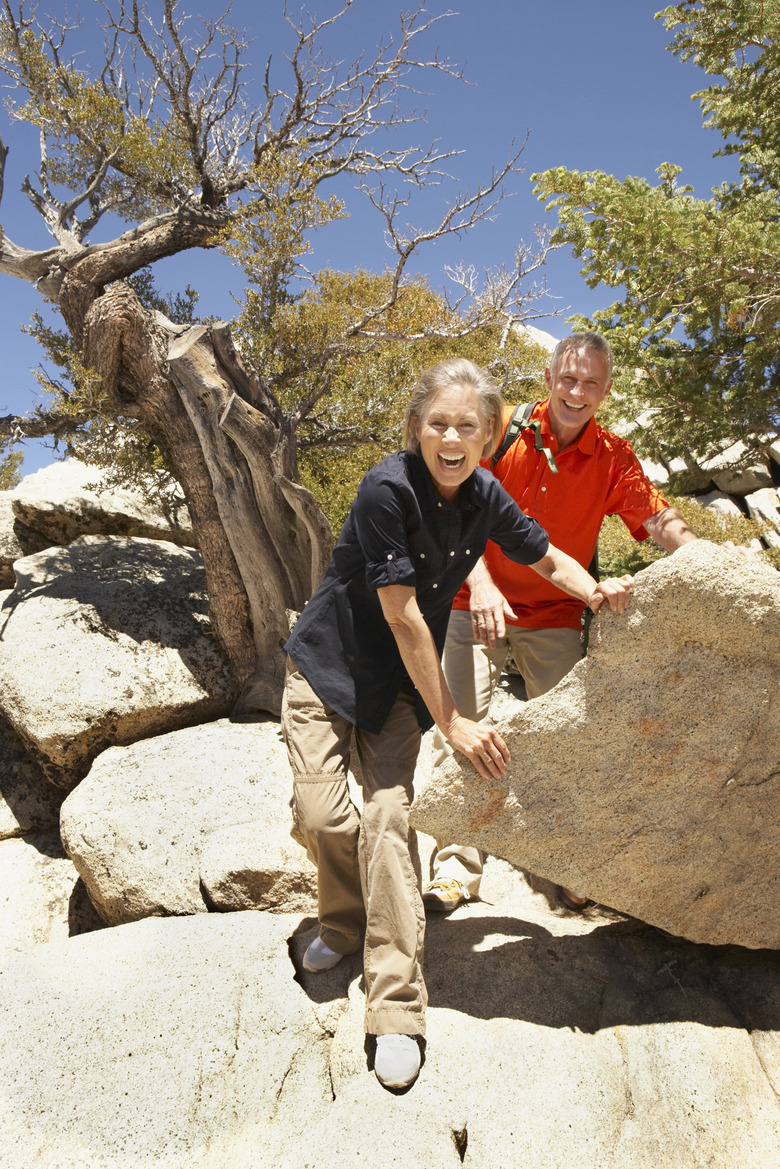Ways To Protect Biodiversity
Variety is the spice of life, an old saying goes. It's also the price of life: Without a variety of life — biodiversity — ecosystems suffer. Ecosystems include all the things, living and nonliving, needed for the health of a particular area. Damaging biodiversity damages ecosystems because an ecosystem's components are interdependent. Human life is affected, too. For instance, damaging a region's insect life can interfere with pollination, which in turn affects the ability of plants to produce fruits and vegetables. Protecting biodiversity, then, also protects human interests.
Putting Things Right
Putting Things Right
Unfortunately, human activity has harmed the world's biodiversity. Too much fishing and hunting, destruction and damage to habitats, pollution, climate change — all these threaten biodiversity. Fortunately, some damage can be reversed through restoration of an area's habitat. Restoring a habitat provides the foundation for biodiversity. The species that should be living in an area can return or increase in numbers. Even in urban areas, restoring native plants can provide food and shelter for native animal and insect species. In such areas, establishing wildlife corridors allows animals to travel safely.
Practicing Sustainability
Practicing Sustainability
Human activity is reducing biodiversity at a rate 1,000 times faster than has happened over the last 65 million years, according to the International Union for Conservation of Nature. The Earth can't sustain biodiversity under such conditions. The IUCN predicts the extinction of over a million species in the next half-century. Practicing sustainability means using resources more wisely so that Earth can maintain its riches. For instance, anyone can buy organic products, which reduces habitat damage by eliminating harmful pesticides and fertilizers. Energy efficient products consume less energy and also protect resources.
Keeping Things Wild
Keeping Things Wild
About 45 percent of the world's forests are gone, according to the United Nations, yet they contain most of land's biodiversity. By destroying all this habitat, human activity is causing the worst extinction event since the extinction of the dinosaurs. Setting aside remaining wild areas not only preserves existing biodiversity, it also helps with efforts to restore ecosystems. The wild areas serve as a reference point for how the environment of a given area should function. Meanwhile, conserving forests prevents $3.7 trillion-worth of harmful greenhouse gas emissions, according to a 2010 report from the Convention on Biological Diversity.
Linking Ecology to Economy
Linking Ecology to Economy
For those who love nature for nature's sake, protecting biodiversity is an obvious priority. Those less concerned may need education that shows how biodiversity is linked to human welfare and wealth. Medicine, food, building materials, clothing — these depend on Earth's biodiversity. Indeed, civilization itself is built on Earth's riches — its natural capital — and its loss costs money. Doing nothing to counteract biodiversity loss over the next 50 years will cost $2 to $4.5 trillion annually, the CBD report warns.
References
- Environmental Protection Agency: Principles for the Ecological Restoration of Aquatic Resources
- Yale Environment 360: Urban Nature: How to Foster Biodiversity in World's Cities
- Columbia University Earth Institute: What You Can Do to Protect Biodiversity
- United Nations Decade on Biodiversity: Why We Are Losing Biodiversity
Cite This Article
MLA
Johnson, Sophie. "Ways To Protect Biodiversity" sciencing.com, https://www.sciencing.com/ways-protect-biodiversity-23582/. 24 April 2017.
APA
Johnson, Sophie. (2017, April 24). Ways To Protect Biodiversity. sciencing.com. Retrieved from https://www.sciencing.com/ways-protect-biodiversity-23582/
Chicago
Johnson, Sophie. Ways To Protect Biodiversity last modified March 24, 2022. https://www.sciencing.com/ways-protect-biodiversity-23582/
